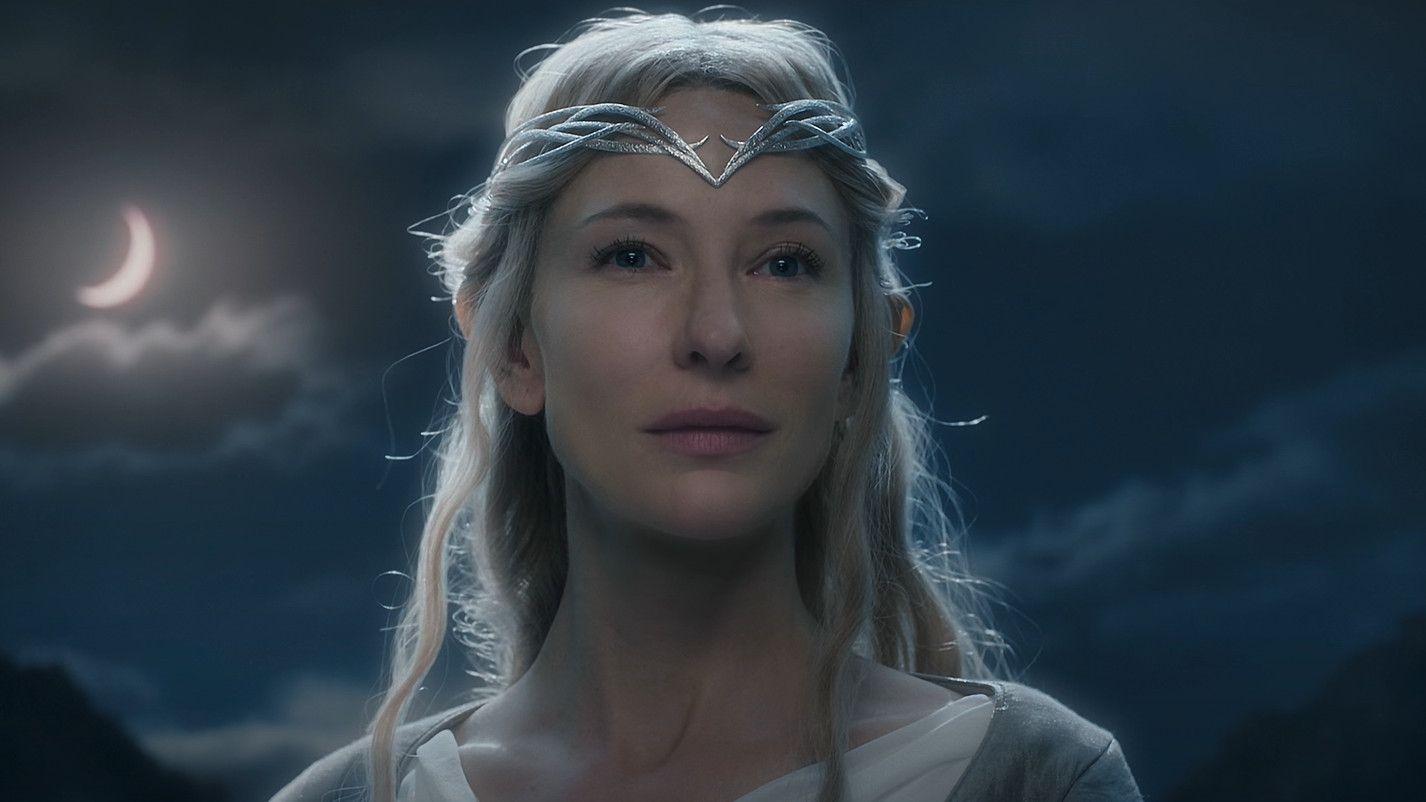
The way time was measured in Middle-earth was much like our own, with characters in both *The Hobbit* and *The Lord of the Rings* tracking the stars, seasons, and using days, months, and years. However, Tolkien’s *The Silmarillion* reveals that this wasn’t always the case. Originally, the world was lit not by the sun and moon – which were created by divine beings called the Valar – but by Two Trees, and before those, by giant towers called the Two Lamps. Before the sun existed, time was measured in ‘Valian Years’ by the Valar and Elves, and these years were longer than our solar years. Tolkien actually struggled to determine exactly *how* much longer these Valian years were, as shown in notes from *Morgoth’s Ring*.
In his early writings, J.R.R. Tolkien established that one Valian year lasted about 9.5 solar years. He used this timeframe while building the history of Middle-earth in the 1930s and 40s. But as he finished the first volume of *The Lord of the Rings*, he started to question his earlier calculations. He felt events like the Elves’ expansion across Middle-earth seemed too rushed. To fix this, he lengthened a Valian year to 144 solar years – a number tied to the original number of Elves who awoke. Although the term ‘Valian year’ doesn’t appear in *The Lord of the Rings*, the book does state that Elves measured time in 144-year periods. This seemingly small detail actually had a significant impact on the backstories of characters like Galadriel, who lived before the sun was created.
Tolkien’s Retcon Would Have Made The Lord of the Rings’ Oldest Characters Even Older
I’ve always been fascinated by the sheer age of some of the characters in Middle-earth, and Galadriel especially. It’s incredible to think about her origins! She was born way back in the Years of the Trees, in the year Y.T. 1362, and if you calculate based on the older definition of a Valian year, she would have already been over 1,300 years old when the sun first rose. Then, add the 7,050 years that passed until the Fellowship reached Lothlórien, and she’s nearly 8,400 years old by the time Frodo and his companions arrive! But if a Valian year was even longer – 144 of our solar years – it gets truly mind-blowing. She would be almost 26,900 years old! It really puts her wisdom and power into perspective.
Changing the length of a Valian year would have significantly impacted the ages of characters like Galadriel and deepened the sense of ancient weariness among the Elves. While Elrond, born in the First Age, wouldn’t have been affected, the change would have drastically increased the age difference between him and Galadriel. Originally, Galadriel was only about 2,000 years older than Elrond, but with the extended Valian years, that difference would have grown to over 20,000 years.
The Lord of the Rings Was Written With Shorter Valian Years in Mind
Figuring out what’s ‘official’ in Tolkien’s stories isn’t easy, as he kept revising them throughout his life. Generally, his later writings are considered the most accurate, but there’s one exception: fans usually calculate Valian years as 9.582 Earth years, even though Tolkien later suggested a much longer year of 144. Using the longer Valian year would create inconsistencies in the established timeline, which was created before Tolkien changed his mind. While Elves moved at a slower pace than humans, the extended Valian years would make even simple journeys absurdly long—for instance, a trip that later characters could complete in just a few years would take the Elves centuries.
Tolkien could have resolved inconsistencies in the timeline by making Valian years longer, but he chose not to. As a result, attempts to revise the length of a Valian year actually create more problems for the story’s consistency. It’s best to stick with Tolkien’s original idea of a Valian year lasting approximately 9.582 solar years. Tolkien was known for being a perfectionist and often tried to refine details even when it wasn’t necessary. Ultimately, it doesn’t detract from the reading experience if some events happen at a slightly faster pace than real-world logic would allow. However, it’s still interesting for fans today to see how Tolkien considered changing the history of Middle-earth and to think about the impact even a small change could have had.
Read More
- Прогноз криптовалюты UNI: прогнозы цены UNI
- Серебро прогноз
- How Travis Kelce Reportedly Pulled Off His Sweet Proposal To Taylor Swift: ‘He Knew He Wanted To Marry Her’
- Золото прогноз
- Please Don’t Destroy Reacted To The SNL Breakup In A Heartfelt And Hilarious Way That Involves Winnie The Pooh (And I Wouldn’t Expect Anything Less)
- Brett Goldstein Explained Why He Wrote A Rom-Com For JLo, And Of Course It Involved A Few Curse Words
- Прогноз нефти
- The Fragrant Flower Blooms with Dignity Season 1 Episode 10 Release Date, Time, Where to Watch
- Abbott Elementary’s Best Halloween Episode Yet: Camping Trip Delights Fans
- Cheers’ Confirmed Remake Saves Ted Danson’s Iconic Series From A TV Trend That Needs To End
2025-10-06 02:59